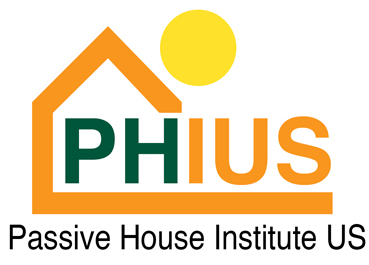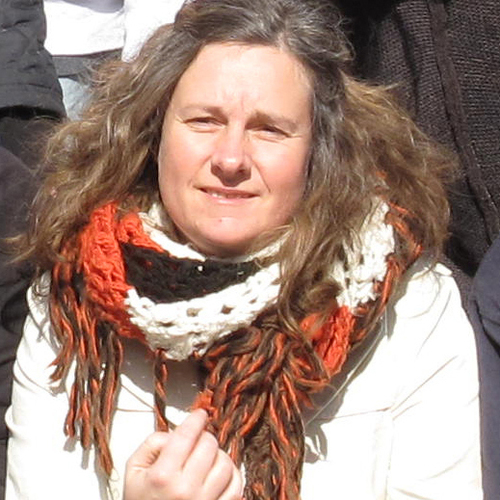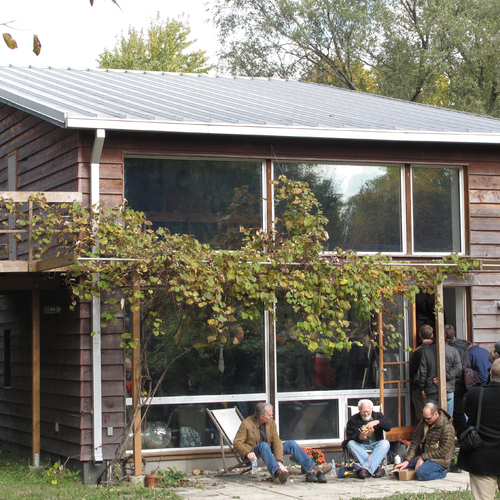
Image Credit: PHIUS
Since 2012, Passive House Institute U.S. has worked on delivering a standard that would make it easier and more practical for professionals to deliver ambitious, performance-based, energy-efficient designs. PHIUS also sought to make a standard that would be useful in wider policy proposals.
In the process, PHIUS addressed climate-specific and economic issues that had surfaced while applying the European Passivhaus criteria to buildings across North America’s varied climate zones.
At the same time, PHIUS was developing a passive building certification program that leveraged existing, widely accepted high-performance industry standards already well developed by organizations like RESNET and the Department of Energy. PHIUS partnered in 2012 with the Department of Energy explicitly to co-promote each other’s programs and committed to make its Zero Energy Ready Home (previously the Builders Challenge) program a prerequisite for PHIUS passive building certification.
This provided an opportunity for harmonization of passive building requirements with existing codes and industry standards and added critical third-party quality assurance through RESNET/PHIUS+ raters to the thorough design review provided by PHIUS.
This harmonization has been welcomed by lawmakers who can now refer to the newly emerging standard built on U.S. conventions and backed by DOE in their policy work.
Connections with other programs
Since the launch of the new standard, legislation has been proposed in New York City that references the new PHIUS+ 2015 climate-specific passive building standard as a strategy to meet the climate action plan goals of the city. Another proposal was brought forward by the city council of Seattle to increase the allowed floor area ratio for multifamily projects that meet PHIUS standards. The recently released Zero Net Energy Action Plan of California also refers to the new PHIUS passive building standard as an appropriate technology facilitating those who aim to reach the net-zero goal.
We’re gratified by the recognition. Moreover, it’s great to see lawmakers begin to incorporate passive building principles as they map out measures to reach specified carbon reduction goals.
The new standard work also attracted the Enterprise Foundation, which assembled an expert committee to advise on what energy standards to include in its new 2015 Green Communities criteria. The Green Communities Criteria is a free certification program that is widely promoted by state housing finance agencies to affordable developers to guide sustainable design. PHIUS+2015 certification is now named as part of the criteria, along with Living Building Challenge and DOE’s ZERH, to qualify for the top tier, earning an additional 12 energy points, which is very significant for developers in an increasingly competitive process for tax credits.
Climate sensitivity makes it cost-effective
PHIUS+2015 makes passive building more cost-effective to implement in the United States because it is climate-sensitive. The PHIUS Technical Committee which conducted the standards research set out to address the common complaint that the level of insulation required to reach the German-derived Passivhaus standard was not cost-effective. In doing so, it sought cost-optimization across the board using U.S. construction cost and energy cost data.
All of this work was done with a mind to retaining ambitious energy efficiency goals, comfort, and resilience. The result: low-load targets that represent the sweet spot between generation and conservation.
For example, the new standard provides the zero energy community design criteria to dial in the envelope before jumping off to photovoltaics. Of course, cost parameters change, and so do energy prices. Therefore PHIUS expects that the design guidelines will be dynamic and need to be recalibrated every 3 to 5 years.
For all of these reasons, we think that the new standard’s influence will extend beyond the existing passive building community to the broader energy-efficient building community in the United Sates.
Fixing problems with one-size-fits-all
The technical committee also addressed a common issue we experienced when applying one-size-fits-all criteria: it led to buildings prone to overheating and comfort issues. Instead, the Technical Committee made an effort to better guide designs by balancing heating and cooling criteria appropriately by climate to assure thermal comfort. For that purpose, climate-specific mandatory heating and cooling load criteria were added.
In practice, those changes have been playing out very successfully so far. The first pilot projects were started 1 1/2 year ago. A surprising but not unexpected pattern has emerged since, and it has confirmed that the changes made were well warranted. We have found that the most challenging criterion is no longer the heat demand and not even the peak heat load, but the annual cooling demand. The new cooling demand targets are much more stringent than the European targets. Given realistic assumptions of relatively high internal gains from people, appliances, and hot water, cooling really is the limiting factor, closely followed by source energy in most places.
The committee made a commitment to addressing climate-change concerns by tying the source energy criterion to a personal share that each inhabitant would get to emit in the form of CO2. The personal share is derived from the global carbon reductions calculated to be necessary to keep temperatures from warming beyond 2 degrees C.
Finally, it’s worth noting that the climate-specific metric is only one factor that differentiates the PHIUS+ building certification program. PHIUS+2015 is a voluntary quality assurance program that is offered through PHIUS to homeowners, builders, and developers. It is offered for all building types, new or retrofit, and for all climate zones. PHIUS+ includes a rigorous design review that incorporates modeling in WUFI Passive, but adds a stringent third-party quality assurance/quality control protocol that PHIUS believes is critical if passive building is to be widely accepted.
Katrin Klingenberg is the co-founder of the Passive House Institute U.S., which earlier this year released its new climate-specific building standards for North America. After they were published, GBA invited her to use this space for further comment.
Weekly Newsletter
Get building science and energy efficiency advice, plus special offers, in your inbox.















4 Comments
Source energy mulitplier
If the source energy multiplier on the American Grid is 3.1 and PV onsite is 1, why would natural gas on site be 1 as well. NG has to be at least twice the problem of PV. But if onsite NG is two then offsite needs to be 6. That strikes me as a better ratio. PV is one can also be put through a heat pump. Would that make it 0.3?
Don't get me started...
... on the inherent carbon accounting problems in PHISU, and treating the US grid (or even large subsections) as a one-size fits all measure of the actual carbon use. Pretending that an all-electric code-min house in Seattle heated with heat pumps is somehow emitting more carbon than a PHIUS house in Seattle burning small amounts natural gas is to ignore local & regional grid-reality. Lumping WA & OR with the rest of the western US grid is has no legitimate basis, since transmission power flows are always FROM the heavy-hydro northwest TO higher-carb parts of the western grid, and never the converse. A PHIUS house can potentially offset far more carbon in UT & WY than it ever could in WA & OR, where the answer to being low-carb is to just not use fossil fuels on site, independent of the thermal efficiency of the house, yet they're all on the western grid:
https://upload.wikimedia.org/wikipedia/commons/thumb/f/f4/NERC-map-en.svg/2000px-NERC-map-en.svg.png
Even the US grid models used to come up the one size fits all source energy multipliers are based on data from 2007, before the huge boom in midwestern wind, conversion of coal to natural gas on a large scale in much of the country, and local booms in PV solar (on both sides of the meter.) The grid is evolving much faster than most people think (faster in some parts than others.) Using stale data and overly large grid regions for the multipliers creates a credibility problem. If my tax accountant were that loosey goosey in his methods I'd probably be in jail! :-)
I look forward to better carbon accounting on the next recalibration of PHIUS. In 5 years all new homes in CA will be required to be Net Zero Energy, and the grid source & operation in that state will bear only vague resemblance to what it was in 2007. The average unsubsidizied cost of PV right now is $3.37/watt ( https://openpv.nrel.gov/ ), and in 2020 it'll likely be under $2 in most of the US (as it is in Australia and Germany right now.)
Drop the source energy category altogether
Since PHIUS is starting afresh it might be a good time to limit its responsibilities to the efficient construction of houses. The ratings according to climate is of course a very good idea. In fact, suddenly my house is passive house. However, the energy source categories are quite valid but more obviously the responsibility of the house owner to make such evaluations. Certainly a helpful guide to clean energy ideas is welcome but the core issue is "how much energy does the house require?". Period. That figure can be standardized, the source energy is a flowing changing process which should be divorced from the primary and very good aims of Passive house building.
"If my tax accountant were
"If my tax accountant were that loosey goosey in his methods I'd probably be in jail! :-)"
Thats awesome, too bad politicians don't have to meet this standard of reality acknowledgement
Log in or create an account to post a comment.
Sign up Log in